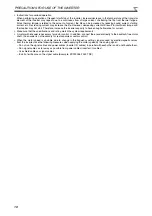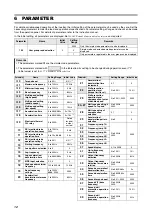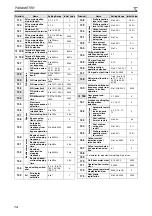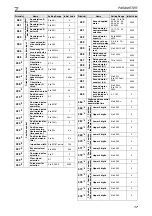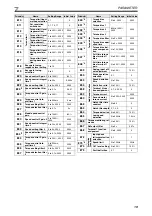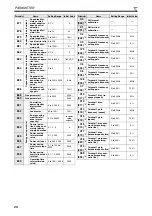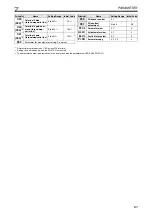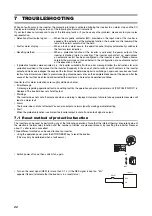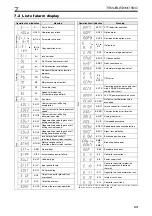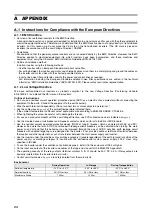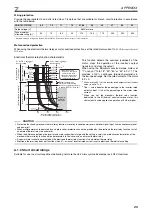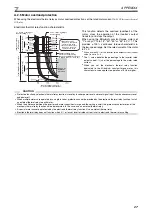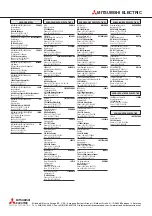
24
A APPENDIX
A.1 Instructions for Compliance with the European Directives
A.1.1 EMC Directive
Our view of transistorized inverters for the EMC Directive
A transistorized inverter is a component designed for installation in an enclosure and for use with the other equipment to
control the equipment/device. Therefore, we understand that the EMC Directive does not apply directly to transistorized
inverters. For this reason, we do not place the CE mark on the transistorized inverters. (The CE mark is placed on
inverters in accordance with the Low Voltage Directive.) CEMEP
Compliance
We understand that the general-purpose inverters are not covered directly by the EMC Directive. However, the EMC
Directive applies to machines/equipment into which inverters have been incorporated, and these machines and
equipment must carry the CE marks. EMC Installation Guidelines BCN-A21041-202
Outline of installation method
Install an inverter using the following methods:
– Use the inverter with an European Standard-compliant noise filter.
– For wiring between the inverter and motor, use shielded cables or run them in a metal piping and ground the cables on
the inverter and motor sides with the shortest possible distance.
– Insert a line noise filter and ferrite core into the power and control lines as required.
Full information including the European Standard-compliant noise filter specifications are written in the technical
information "EMC Installation Guidelines" (BCN-A21041-202). Please contact your sales representative.
A.1.2 Low Voltage Directive
We have self-confirmed our inverters as products compliant to the Low Voltage Directive (Conforming standard
EN 61800-5-1) and placed the CE mark on the inverters.
Outline of instructions
Do not use a residual current operated protective device (RCD) as an electric shock protector without connecting the
equipment to the earth. Connect the equipment to the earth securely.
Wire the earth terminal independently. (Do not connect two or more cables to one terminal.)
Use the cable sizes on
at the ambient temperature indicated there.
If the ambient temperature is different, select appropriate wire according to EN60204 ANNEX C TABLE 5.
When tightening the screw, be careful not to damage the threads.
For use as a product compliant with the Low Voltage Directive, use PVC cable whose size is indicated on
.
Use the moulded case circuit breaker and magnetic contactor which conform to the EN or IEC Standard.
Use the residual current operated protective device (RCD) of type B (breaker which can detect both AC and DC).
However, be aware that also AC/DC sensitive earth leakage circuit breakers can be activated when turning the main
power on and off and that this behaviour can be improved through the use of AC/DC sensitive earth leakage circuit
breakers with adapted triggering curve designed for the inverter. If not, provide double or reinforced insulation between
the inverter and other equipment, or put a transformer between the main power supply and inverter.
Use the inverter under the conditions of overvoltage category II (usable regardless of the earth (ground) condition of the
power supply), overvoltage category III (usable with the earthed-neutral system power supply, 400 V class only)
specified in IEC664.
To use the inverter under the conditions of pollution degree 3, install it in the enclosure of IP54 or higher.
On the input and output of the inverter, use cables of the type and size set forth in EN60204 Appendix C.
The operating capacity of the relay outputs (terminal symbols A, B, C) should be 30 V DC, 0.3 A. (Relay outputs are
basically isolated from the inverter internal circuit.)
Control circuit terminals on
are safely isolated from the main circuit
Environment
During Operation
In Storage
During Transportation
Ambient temperature
−
10°C to + 50°C
−
20°C to +65°C
−
20°C to +65°C
Ambient humidity
90% RH or less
90% RH or less
90% RH or less
Maximum altitude
1000m
1000m
10000m

